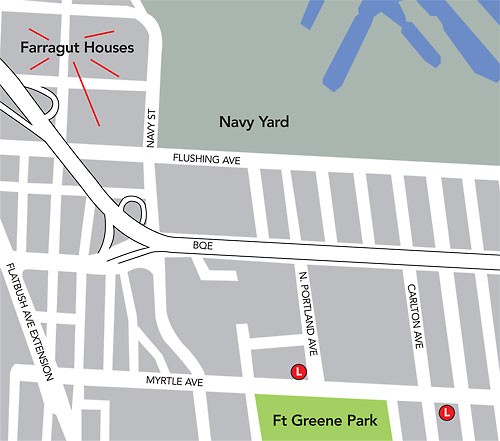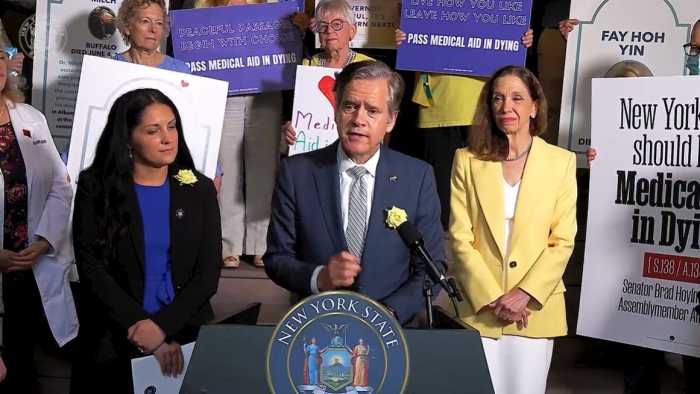And you thought your laundry situation was the pits. Try walking a mile in these folks’ shoes — literally.
Hundreds of residents of a public housing project in Vinegar Hill have been forced to walk nearly a mile to do their laundry ever since the on-site Laundromat closed last year.
Farragut Houses, the city-run, 10-tower complex of 3,440 residents, has zero laundry facilities within a nearly 20-block radius.
“It is almost a year since we’ve had a Laundromat,” said Ines, 64, who declined to give her last name.
So at about 7 am last Friday, there was Ines, setting out from the intersection of Navy Street and Flushing Avenue with a cart piled high with laundry, making the first steps of a 25-minute walk to a Laundromat on Myrtle Avenue.
“It’s terrible,” said Ines, who added that the trip was especially difficult thanks to her respiratory problems.
As Ines made it home at around 10:30, another Farragut House resident appeared at the intersection. Jerry was just beginning his journey to Myrtle Avenue, like Ines, pushing a black metal cart piled with laundry.
Also like Ines, he supports a city plan to tear down a row of dilapidated homes just inside the wall of the Brooklyn Navy Yard at the corner of Navy Street and Flushing Avenue.
“When they put in a supermarket, they should put in a Laundromat, too,” he said.
The weekly march to one of the two Myrtle Avenue Laundromats — one at North Portland Avenue, the other at Carlton Avenue — would not be necessary if the city found another operator for the basement laundry space at 191 Sand St., which was closed last year because it “was not up to code,” said Howard Marder, spokesman for the New York City Housing Authority.
He added that there “is no immediate plan” to put a new laundry facility into the Farragut Houses.
“Our capital projects division is doing a cost estimate to find out what it will cost to put that facility back into compliance, and then we would have to do a [request for proposals] to find someone to run it,” said Marder.
Some residents, like tenants association President Deborah Stewart, have their own washing machines. But many others, she said, make the “long and very inconvenient” walk to Myrtle.
Or, like her neighbor Deborah Ansley, they rely on relatives to drive them out of the neighborhood.
“I have a daughter who lives out in East New York, and she comes and drives me,” said Ansley, who has two herniated discs so she cannot make the trek to the Laundromat.
Unlike other gentrified neighborhoods, DUMBO, which borders the Farragut Houses, has no Laundromats — though there are plenty of coffee shops and restaurants and no less than two modern design shops.
In part, that’s because all of the new luxury developments have a washer and dryer in each unit.
Circumstances aren’t much better at neighboring housing projects, according to Ed Brown, the president of the Ingersoll Tenants Association in Fort Greene.
Ingersoll hasn’t had a Laundromat in more than 11 years. Meanwhile, the Laundromat directly across the street from the project has been demolished to make way for John Castimatidis’s luxury residential development — one that the Gristedes owner has put off indefinitely, thanks to the credit crisis.
Brown is trying to work with the city’s NYCHA and elected officials to remedy the problem.
Indeed, Councilwoman Letitia James (D–Fort Greene) said she’s trying to allocate funding to rebuild the projects’ laundry facilities.





















